Editor’s comment
← vista completaPublished on December 27, 2013 | http://doi.org/10.5867/medwave.2013.11.5870
2013 in review – pleased and proud
Balance de 2013: satisfechos y orgullosos
We are pleased. We may not have achieved all of the goals we would have wanted, but we feel we are moving ahead in consolidating and developing the Journal in a long-term perspective. 2013 has been a good year.
To begin with, our permanent editorial staff has finally settled down. Its members are Felipe Martínez, research editor; Felipe Cardemil, reviews editor; Consuelo Salas, manuscript and peer review coordinator; Elena Lagos, technical editor; and Rodrigo Núñez, web publisher. The Chilean editorial board has also been active, providing great ideas, vision and support.
Let us begin with the number of published articles. As shown in Figure 1, in 2012 Medwave published a particularly large number of articles – 130 in all – equivalent to roughly 12 articles per number. That year several thematic issues appeared and specific contributions were solicited, as shown in Figure 2. In contrast, we will close 2013 with an average of nearly eight articles per number, which is considerably less.
At the beginning of this year, the editors decided to reduce the number of commissioned articles, and this explains the drop in published articles. We felt that the Journal’s contents should truly reflect authors’ engagement and interests. This fact, together with a higher rejection rate, led to a smaller monthly output. We believe that publishing 110 articles in a year is the optimum number and we are striving to achieve this in the future.
 Full size
Full size 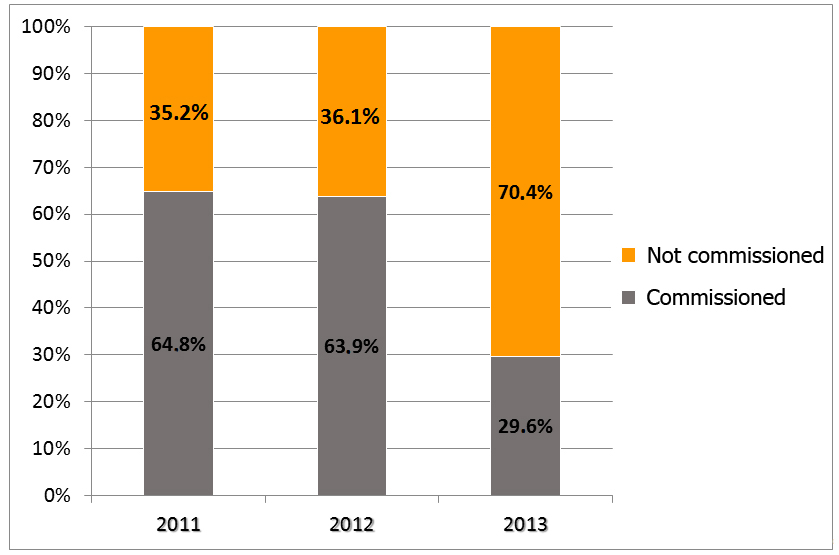 Full size
Full size As was mentioned above, there has been a significant change in the rate of rejection. When we applied for MEDLINE inclusion in February 2012, we stated a rejection rate of 36% (Figure 3); now, however, we will end the year with a rejection rate approaching 50%. This is desirable and the explanation lies in the greater demands for quality scientific reporting that we expect from our authors, and to the fact that we adhere to Equator-Network guidelines. Equator-Network seeks to enhance the quality, transparency and accuracy of biomedical reports.
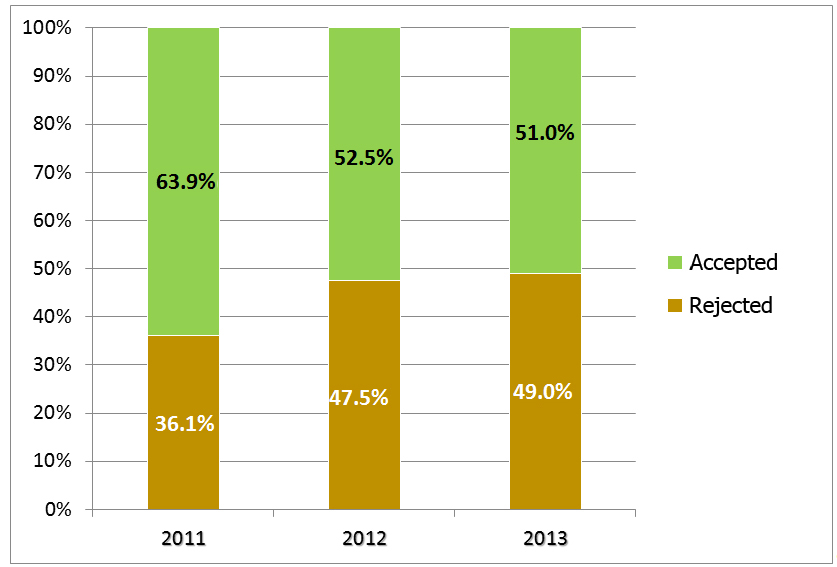 Full size
Full size Figure 4 shows that the better quality of published manuscripts is also related to the version in which they are accepted. The figure shows that only 7.7% of articles are accepted in version 1, while 93.3% are accepted in versions 2 or more. Previously1 we have said that we seek to be rigorous in the methodological revision of manuscripts and we certainly take into account reviewer comments.
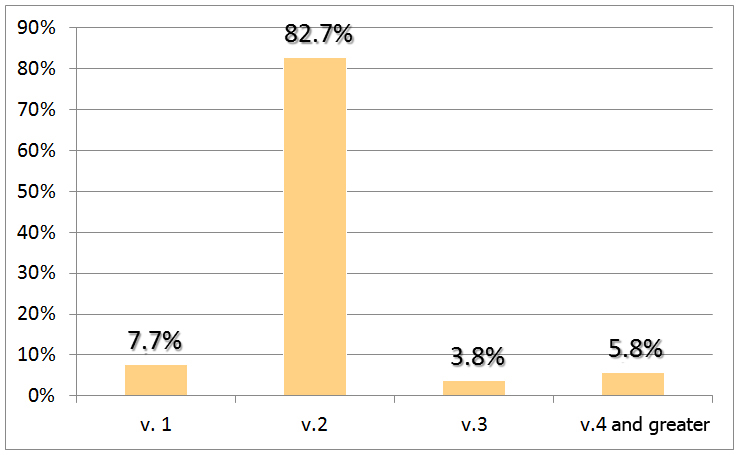 Full size
Full size Where do our authors come from? As we see in Figure 5, they come from many different countries of the region, but also from Spain. Outstanding contributors: Chile, Mexico and Cuba.
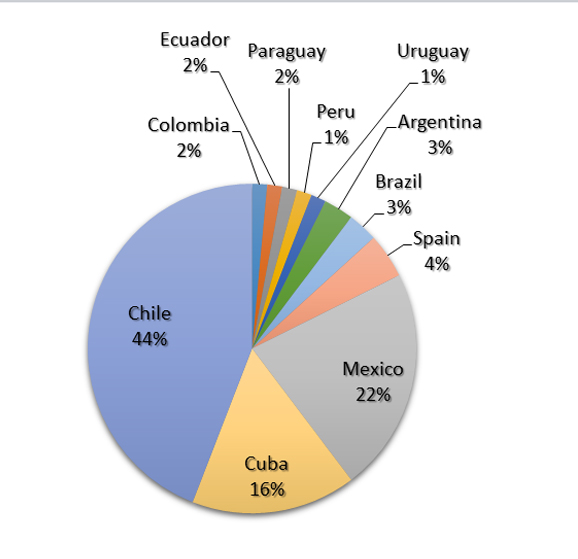 Full size
Full size When we became a peer-reviewed journal back in 2010, we claimed that the majority of our articles were peer-reviewed. Now we can say that the great majority are - 86.5% in 2013. Only editorials are not sent out for review. Thus, we publish even essays and opinion pieces if reviewers and handling editors suggest merit and pertinence. Medwave is open to all sorts of articles, ranging from primary studies to analysis and clinical reviews that contribute to the daily practice of medicine. This editorial position will not change in the future since it is consistent with our mission to help decision makers, be they policy experts or clinicians.
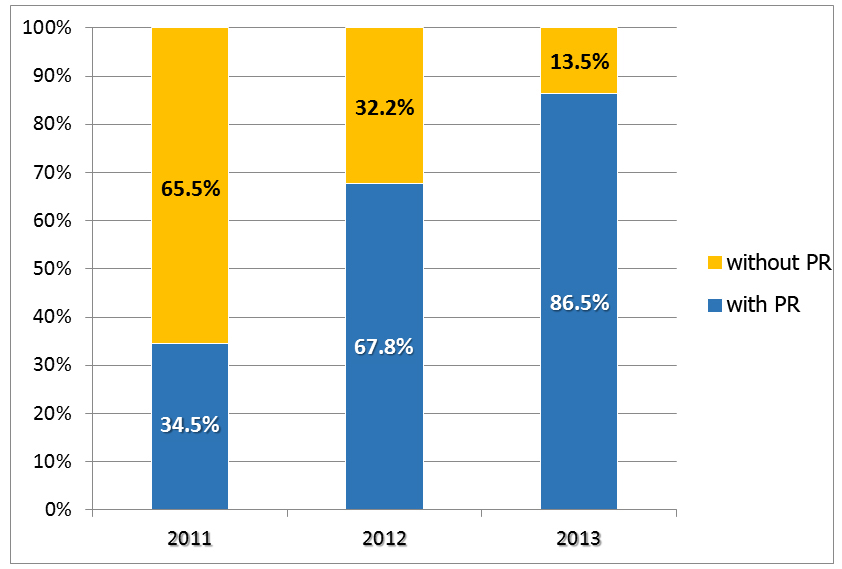 Full size
Full size Medwave’s peer reviewers are also fully international. The Journal only exceptionally requests editorial board members to perform peer review, contrary to what happens in many smaller biomedical journals. Thus, our peer review process is effectively external and we have a database comprised of over 300 reviewers with methodological and thematic expertise in different areas of medicine and allied disciplines. They are the backbone of quality and pertinence control for every manuscript submitted. Their comments and views are valuable and valued by the handling editors. They donate their time for no financial retribution driven only by their commitment to strengthening scientific exchange in our Region. In a related article (doi: 10.5867/medwave.2013.11.5869) and on behalf of the editorial team, Felipe Cardemil expresses our appreciation to our reviewers for this devoted and indispensable task.
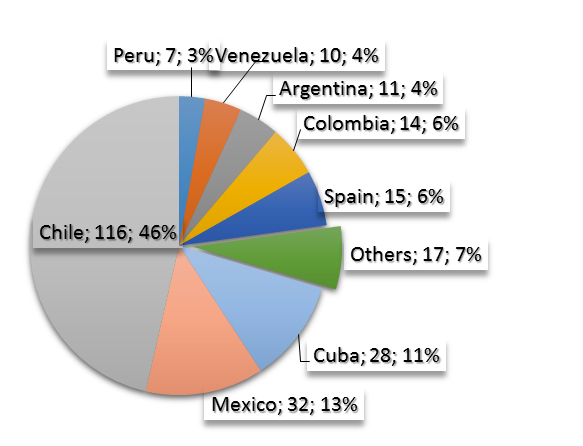 Full size
Full size Anyone who is looking to submit a manuscript must be able to know in advance how long his or her journal of interest takes in reaching a final decision. Shall I have to wait for a year? Nine months? Journals should disclose their lead times, essential indicators for academic authors looking to reach publishing targets. In addition, if the decision is rejection, please let me know as soon as possible in order to resubmit to another journal.
Figure 8 shows Medwave’s indicators. The curve drops sharply after April, which is when we adopted continuous publication of articles as they ready from the copyediting process2. This decision was key in overhauling our lead times. Before, time from submission to publication was on average 100 days, and 38 days from acceptance to publication, which dropped to 74 and 11, respectively, after adoption of continuous publication. Thus, once the author is informed of acceptance, she will wait 11 days on average for her paper to be published. During this period, technical editing, copyediting and final approval by the editor-in-chief occurs, before sending the PDF for final author checking.
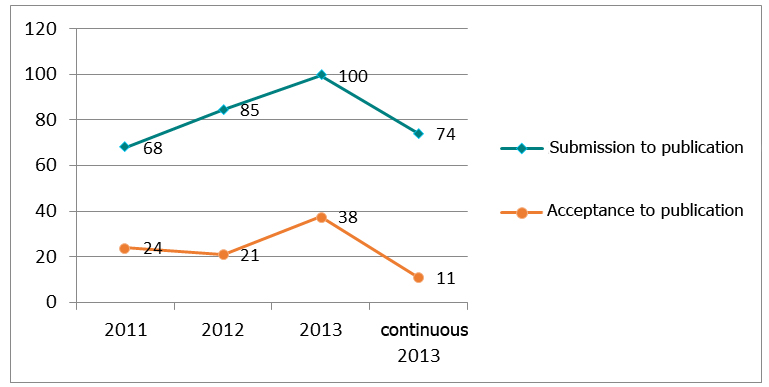 Full size
Full size At the end of the day, our authors know that article publication in Medwave will occur, if accepted, within a three-month period after submission. Many international journals seek to achieve this high standard.
We have many more things to tell, no doubt. Nevertheless, let us leave some surprises for the early 2014 editorials. Readers will discover novelties that will continue to raise the bar of our Journal, to increase its international outreach, and to strengthen its pertinence for professional practice. Therefore, for now, all that is left is to wish you a very Happy New Year.

Notes
Conflicts of interest
The author declares no conflicts of interest with the present article.

